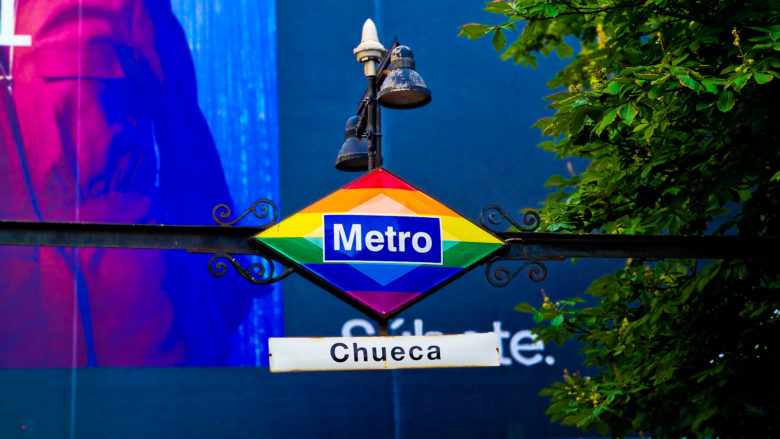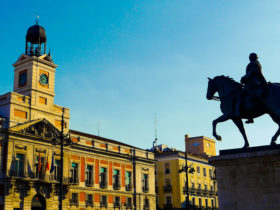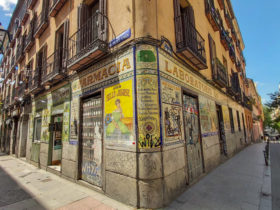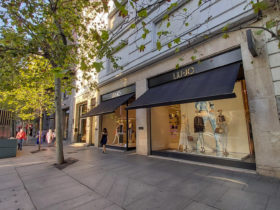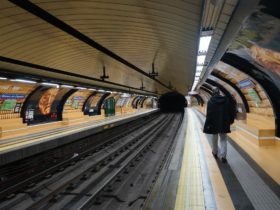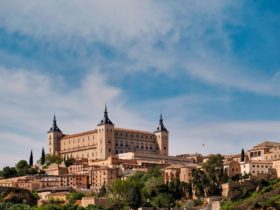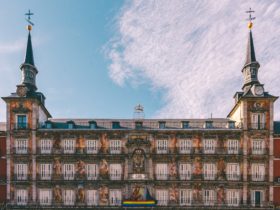Nestled in the lively center of Madrid lies the neighborhood of Chueca, a haven for the LGBTQ+ community and a must-visit spot for any traveler seeking to absorb the city’s diverse personality. Beyond its reputation as a vibrant gayborhood, Chueca boasts trendy boutiques, incredible gastronomic experiences, and an inviting atmosphere that promotes inclusivity and togetherness. This Chueca Neighborhood Guide will lead you to explore some of the most extraordinary places to see, stay, and dine in this eclectic corner of Madrid.
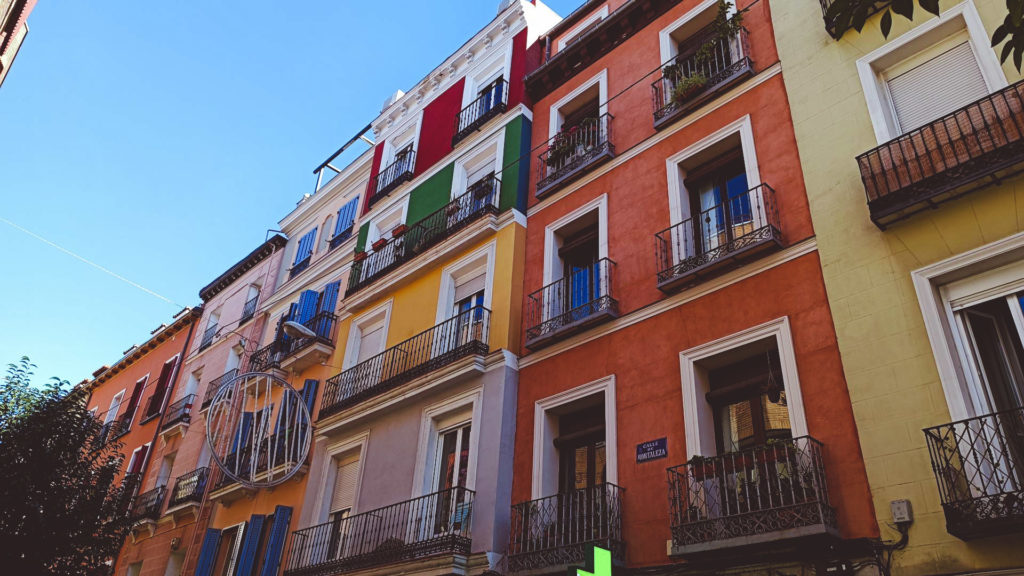
Chueca, an ever-vibrant district in the heart of Madrid, has long been synonymous with inclusivity and open-mindedness. As a bastion for the LGBTQ+ community, this lively area provides a unique expression of urban culture that cannot be overlooked. Meander through Chueca’s colorful streets, and you’ll find much more than just a symbol of empowerment – it is also a treasure trove of arts, entertainment, and cuisine.
Beyond its significance as an LGBTQ+ stronghold, Chueca is also famed as one of Madrid’s gastronomic areas. Foodies can rejoice as they explore trendy eateries and culinary hotspots serving up delectable Spanish fusion dishes to traditional tapas. Choose from cozy cafés, fine dining restaurants, or vibrant food markets like the iconic Mercado de San Antón.
This Madrid Neighborhood Guide is a great starting point for all that awaits you in Chueca.
Keep Reading About Madrid…
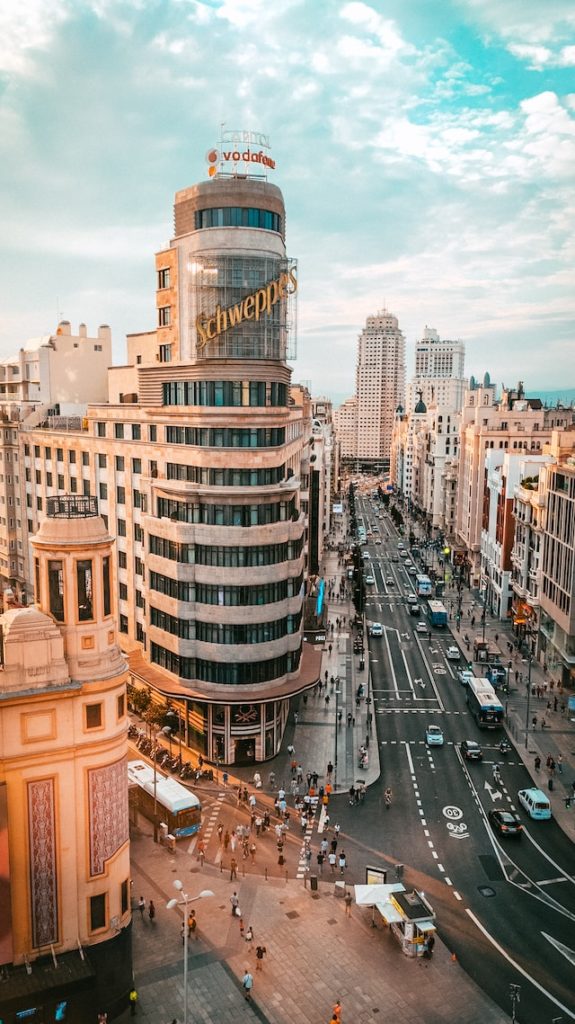
Table of Contents
Things to See in Chueca, Madrid
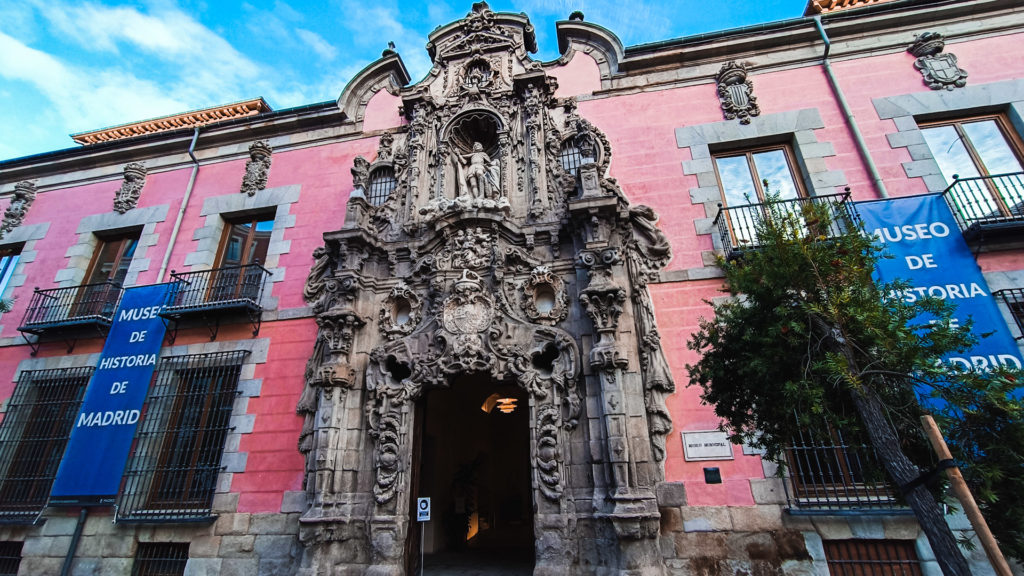
Some of the main attractions in Justicia (Chueca) include the Plaza de Chueca, a bustling square filled with cafes, restaurants, and shops; the Mercado de San Antón, an indoor market offering fresh produce and local cuisine; and Calle Pelayo, a shopping street known for its fashion boutiques and quirky shops. These are some of the things to see in the Chueca neighborhood:
- Plaza de Chueca: A bustling square located in the heart of Madrid’s trendy Chueca neighborhood. The square is known for its colorful atmosphere and is home to several popular bars, restaurants, and shops. Visitors to Plaza de Chueca can enjoy people-watching while sipping on a café con leche at one of the outdoor cafes or soak up the sun on one of the many benches located throughout the square. The plaza is also famous for its lively events, including Madrid Pride, celebrated annually in June.
- Mercado de San Antón: A popular market known for its fresh produce, gourmet food stalls, and its rooftop terrace with stunning city views. Visitors to Mercado de San Antón can browse the stalls for fresh seafood, meats, cheeses, and wines or grab a bite at one of the market’s many eateries. The rooftop terrace is the perfect spot to relax with a drink and take in the sights and sounds of the city.
- Museo de Historia de Madrid: A must-see for history buffs. The museum is dedicated to the history of Madrid and features exhibits on everything from the city’s earliest inhabitants to its modern-day cultural scene. Visitors can explore the museum’s many galleries, with artifacts, artworks, and interactive displays. The museum is also known for its beautiful courtyard, the perfect spot to relax and enjoy the historic surroundings.
- Plaza de Zerolo: A square is named after Pedro Zerolo, a gay rights activist who championed LGBT rights in Spain. The plaza is known for its colorful atmosphere and is home to several popular bars, restaurants, and shops. Visitors to Plaza de Zerolo can enjoy people-watching while sipping on a café con leche at one of the outdoor cafes or soak up the sun on one of the many benches located throughout the square. The plaza is also famous for its lively events, including Madrid Gay Pride.
- Barceló Market: Barceló Market is a famous indoor market with gourmet food stalls and a lively atmosphere. The market is also home to many craft shops, clothing stores, and other unique boutiques.
- Palacio de Longoria: A stunning Beaux Arts building built in the early 20th century by architect Jose Grases Riera and is known for its ornate facade, grand staircase, and beautiful stained glass windows. Visitors to Palacio de Longoria can take a guided tour of the palace, including visiting the palace’s many galleries and exhibitions.
- Plaza de la Reina: A lovely plaza known for its ornate fountain, colorful mosaics, and stunning views of the surrounding area.
- Las Salesas: Located east of Chueca, Las Salesas is a neighborhood with a rich cultural and historical background. It is known for its beautiful historic buildings, vibrant nightlife, and trendy boutiques.
- Museo de Cera de Madrid: A quirky museum that showcases wax models of famous personalities from various fields. The museum has something for everyone, from historical figures like Napoleon and Queen Isabel II to modern-day celebrities like Cristiano Ronaldo and Brad Pitt.
- Calle de Fuencarral: One of the most popular shopping streets in the city, it is home to a wide variety of stores, from high-end fashion brands to more affordable options. The street has a lively, vibrant atmosphere and is a great place to spend an afternoon.
- Gran Vía: The most iconic street in Madrid. It is home to a variety of shops, restaurants, and theaters. The street is known for its beautiful architecture and is a perfect place to take a leisurely stroll and soak up the city’s atmosphere.
- Plaza de la Villa de París: A beautiful square home to several historic buildings.
- Plaza de Santa Bárbara: Plaza de Santa Bárbara is a famous square and a popular meeting spot for locals and tourists. The square is surrounded by a variety of bars and restaurants and is a perfect place to grab a drink.
- Casino de Gran Vía: A casino located in an iconic Gran Vía building offering a wide range of slot machines and table games. It also has a restaurant and bar, making it the perfect place to spend a night out on the town.
- Teatro Barceló: Teatro Barceló is a popular nightclub known for its lively atmosphere and great music. The club hosts various events and is a popular spot for dancing and partying.
- Paseo de Recoletos: Paseo de Recoletos is a beautiful tree-lined avenue running through Chueca’s east border. It is known for its beautiful architecture and is a perfect place to take a stroll.
Where to Stay in Chueca, Madrid: Best Areas within the District
Barrio de Justicia (Chueca) is divided into several smaller areas, each with its own unique character and charm.
- Plaza de Chueca Area and LGBTQ+ Neighborhood: Located in the heart of Madrid, the Plaza de Chueca area is one of the city’s most vibrant and diverse neighborhoods. Known for its lively nightlife, trendy cafes and restaurants, and colorful street art, this area is a popular destination for locals and tourists. It is also the center of the city’s LGBTQ+ community, with many bars and clubs catering to this community. During Pride Week, the Plaza de Chueca area is transformed into a colorful and lively celebration of love and acceptance.
- Tribunal and Fuencarral Street: Just a few blocks away from the Plaza de Chueca area lies the trendy neighborhood of Tribunal, which is home to some of the most unique and eclectic boutiques, cafes, and bars in the city. The main street in this area is Fuencarral, which is lined with quirky independent shops and high-end international brands. This area is also home to the Mercado de San Antón, a three-story market with a rooftop bar offering stunning city views.
- Las Salesas: A few blocks east of Tribunal lies Las Salesas, a trendy neighborhood known for its beautiful 19th-century architecture and high-end boutiques. This area is home to some of the city’s most exclusive shopping districts, including Calle Serrano and Calle Jorge Juan, lined with luxury fashion brands. The neighborhood is also known for its vibrant food scene, with some of Madrid’s most acclaimed restaurants.
- Gran Vía Metro Station Area: Located in the heart of the city, the Gran Vía Metro Station area is one of the busiest neighborhoods in Madrid. The main street, Gran Vía, is lined with theaters, cinemas, and high-end stores, while the side streets are home to some of Madrid’s best tapas bars. This area is also home to some of the city’s most iconic landmarks, including the Plaza de España and the Edificio Telefónica, which offers stunning panoramic views of the city.
Best Places to Stay in Chueca (Justicia), Madrid
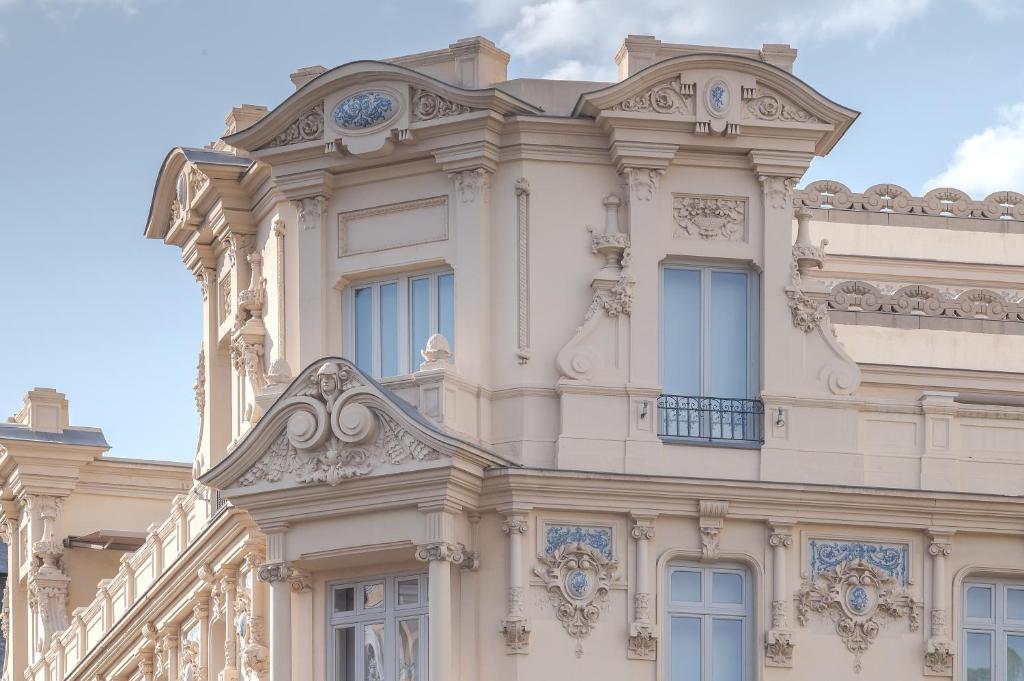
As mentioned above, Barrio de Justicia is recognized for its gay-friendly nightlife, restaurants, boutiques, and central location. In terms of accommodations, this area has everything from luxury hotels to more affordable options.
Find accommodation in Chueca, Madrid.
If you’re looking for Chueca accommodation, this area offers visitors a vibrant and diverse experience with a variety of hotels catering to different budgets. Luxury options include the Only You Boutique Hotel and the URSO Hotel & Spa, both offering high-end amenities and services. In the mid-range bracket, the Petit Palace Chueca and the Room Mate Óscar are popular choices. The Hostal La Plata and the Hostal Mirentxu offer affordable and cozy accommodations for those on a budget.
Best-Rated Luxury & Boutique Hotels in Chueca
- URSO Hotel & Spa, a Small Luxury Hotel of the World
- Only YOU Boutique Hotel Madrid
- The Principal Madrid, Small Luxury Hotels
- Vincci The Mint
- Círculo Gran Vía, Autograph Collection
Best-Rated Midrange & Budget Hotels in Chueca, Madrid
- Room Mate Óscar
- Petit Palace Chueca
- B&B HOTEL Madrid Centro Fuencarral 52
- Woohoo Rooms Fuencarral
- Woohoo Rooms Hortaleza
Best-Rated Guest Houses, B&Bs & Hostels in Justicia (Chueca)
Best-Rated Apartments, Apart-Hotels & Airbnbs in Chueca, Madrid
- SmartRental Collection Gran Vía Capital
- Slow Suites Chueca
- limehome Madrid San Lorenzo
- Bonito Apartamento en Chueca
- BNBHolder Charming & Stylish II CHUECA
Where to Eat & Drink in Chueca
Chueca is a lively and fashionable district located in the heart of Madrid, Spain. It is characterized by its mix of traditional cafés, modern bars, and innovative restaurants. This area is known for its historic charm and modern flair, attracting food enthusiasts, artists, and people who enjoy nightlife. To experience the best of Madrid’s culinary offerings, explore these top 10 dining and drinking spots in Chueca.
- La Carmencita (Calle Libertad, 16): A historic restaurant dating back to 1854, offering traditional Spanish cuisine with a modern twist.
- Mercado de San Antón (Calle Augusto Figueroa, 24): A unique gastronomic market with several food stalls serving a wide range of local and international dishes.
- Trattoria Sant Arcangelo (Calle Moreto, 15): An authentic Italian restaurant specializing in homemade pasta and Neapolitan pizzas.
- Bazaar (Calle San Marcos, 35): A stylish Mediterranean restaurant serving dishes from Spain, Morocco, and Lebanon in an elegant setting.
- El Tigre (Calle Hortaleza, 23): A popular tapas bar offering generous portions of traditional Spanish snacks at affordable prices.
- Celso y Manolo (Calle Libertad, 1): This cozy tavern serves delicious homemade tapas made using high-quality ingredients from around Spain.
- Taberna La Nueva Troje (Calle Gravina, 8): A charming spot offering traditional Spanish tapas and an excellent selection of wines.
- Café Comercial (Glorieta de Bilbao, 7): Chueca’s oldest cafe, dating back to 1887, features a luxurious interior and serves traditional Spanish tapas.
- Bosco De Lobos (Encomenderas, 9): A stylish Italian eatery inside the College of Architects’ courtyard, praised for its modern decor and varied menu.
- Diurno Restaurant & Bar (Calle San Marcos, 37): A sleek venue serving modern Mediterranean cuisine in a chic setting accompanied by creative cocktails.
Nightlife in Chueca
Malasaña, a vibrant neighborhood in Madrid, is known for its role as the epicenter of La Movida Madrileña, an explosion of countercultural and artistic expression during the 1980s. Today, the area remains a hub for locals and tourists seeking an unforgettable night out. Here are six must-visit bars and nightclubs you shouldn’t miss:
- Black & White (Calle de la Libertad, 34): A popular LGBT-friendly club featuring lively DJ sets and drag performances.
- Teatro Barceló (C. de Barceló 43) – A historic nightclub featuring exciting electronic music, a unique setting with multiple levels and terraces, and occasional celebrity performances.
- Space Monkey Club (Calle Campoamor, 3): Known for its alternative and indie music scene with a laid-back atmosphere.
- Delirio Live (Calle Pelayo, 59): Combines live music performances with dance shows and cabaret acts in an intimate setting.
- Boite Club (Calle Tetuán, 27): A trendy dance club with stylish décor and DJ mixes ranging from pop to house music.
- La Kama (Calle Gravina, 4): This intimate lounge delivers sultry vibes with dim lighting and enthralling dance beats.
- LL Show Bar (Calle Pelayo, 35): A popular drag show bar where talented performers entertain the crowds with humor and glamour.
- Escape Bar (Calle Gravina, 13): Offering karaoke nights and themed events that create an inclusive atmosphere for singing enthusiasts.
- Fulanita de Tal (Calle Regueros 9): Lesbian and LGBTQ+-friendly venue featuring live music events, art exhibitions, and a lively atmosphere.
- Enfrente Club (Infantas, 12 ): A neighborhood hotspot providing great music and vibrant dance atmosphere within Chueca’s lively streets.
Brief History of Chueca: A Tale of Tolerance
Nestled within the larger Barrio de Justicia in Madrid, Spain, the neighborhood of Chueca boasts a rich and diverse history. Named after the composer Federico Chueca and situated in the heart of the city, the area has evolved significantly from its humble beginnings as an industrial zone. Today, it stands as a beacon of hope and tolerance, symbolizing the strides made by Spain’s LGBTQ+ community, particularly since General Francisco Franco’s regime came to an end.
During the 19th and early 20th centuries, Chueca took form with the construction of elegant buildings commissioned by the bourgeoisie. Over time, however, these structures fell into disrepair, and a long period of decline ensued. The neighborhood’s revival began in the 1980s when a wave of artists and creators seeking affordable spaces in Madrid moved into Chueca. Their arrival ushered in renewed energy and creativity that would ultimately define its core identity.
The Spanish Gay Liberation Movement played an instrumental role in shaping Chueca into what it is today. Following Franco’s death in 1975, Spain transitioned to democracy ─ a time marked by significant political and social reforms. Amidst these transformations, LGBTQ+ activists found space to dissent and promote their interests. One such watershed moment was the GALA ─ Gais y Lesbianas Asamblearios ─ gathering in 1981, which brought together gay rights advocates from across Spain’s autonomous regions.
Since then, Chueca has grown into a vibrant hub for LGBTQ+ culture and activism. The iconic Bar Toni opened its doors in 1982 as one of Madrid’s first openly gay bars. It signified Chueca’s gradual development as a safe haven for queer individuals who could now express themselves freely without fear. This pioneering spirit continued, and Chueca soon became synonymous with inclusivity and defiance.
Chueca & Orgullo Madrid
Orgullo Madrid, also known as Madrid Gay Pride, is an annual LGBT event that celebrates diversity and the fight for equal rights. Its history can be traced back to the end of Franco’s regime, a period of strict control and repression in Spain. Although gay events were held during that time, they were highly secretive and often dangerous to attend.
The death of General Francisco Franco in 1975 marked a turning point for LGBT rights in Spain. The following year, the first official Gay Pride march took place in Barcelona – a movement that rapidly gained momentum and support from other cities, including Madrid. In 1979, Madrid held its first Gay Pride on July 1st, although it was still considered an informal gathering.
During the 1980s, Madrid’s LGBT community became more visible, with Chueca emerging as a popular gay district. The first official Madrid Pride Parade was organized in 1986 and saw the attendance increase each consecutive year. Throughout this period, legal reforms also occurred; for instance, Spain decriminalized homosexuality in 1988 and established anti-discrimination protections in employment.
In the 1990s and early 2000s, Orgullo Madrid continued to grow in size and significance. It attracted international attention as a major European Pride event, and an increasing number of tourists flocked to the city during this season. The event became highly politicized as various organizations used the platform to campaign for same-sex marriage rights and adoption.
In 2005, Spain became one of the first countries worldwide to legalize same-sex marriage – a historical moment celebrated by the LGBT community at that year’s Madrid Gay Pride.
Nowadays, Orgullo Madrid is one of the largest pride festivals globally, attracting over two million attendees yearly. The week-long celebration features a variety of cultural activities such as concerts, conferences on human rights issues, parties and discussions throughout different neighborhoods across the city.
Orgullo Madrid, or Madrid Pride, is a vibrant and colorful celebration that attracts millions of people from around the world each year. To make the most of your visit and ensure a fantastic experience, keep these practical tips in mind:
- Dates: Madrid Pride usually takes place during the last week of June and culminates with the massive Pride Parade on the first Saturday of July. Check the official website for exact dates and schedules.
- Accommodation: Book your accommodation well in advance, as hotels and apartments in central Madrid fill up quickly during the festivities. Areas near Chueca, Malasaña, and Gran Vía are popular choices due to their proximity to Pride events.
- Transportation: Madrid has an extensive public transportation system that includes buses, commuter trains, and several metro lines. During Pride celebrations, some roads may be closed or have restricted access, so using public transportation is highly recommended.
- Events: Orgullo Madrid boasts a diverse range of events, such as concerts, parties, workshops, sports tournaments, and art exhibitions. Many activities are free to attend, while others may require purchasing tickets in advance.
- Dress code: Summer in Madrid can be hot, with temperatures reaching 25°C at night and 42°C during the day. Wear light clothing, stay hydrated, and don’t forget to apply sunscreen regularly.
- Safety tips: While Madrid is generally a safe city, large crowds during Pride can lead to pickpocketing incidents. Keep your valuables secure, exercise caution when carrying valuable items like smartphones or cameras, and never leave your belongings unattended.
- Respect: Orgullo Madrid is an inclusive event that celebrates diversity and acceptance. Please respect everyone’s right to express themselves freely and enjoy the celebrations without any discrimination.




